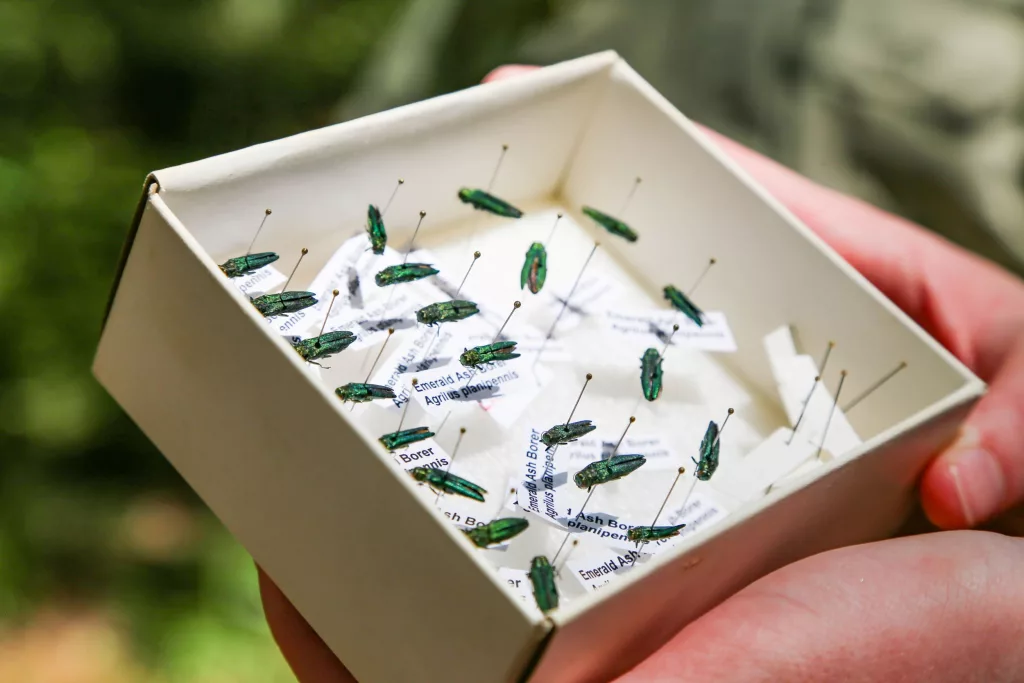
COLLEGE STATION, Texas — The presence of the invasive emerald ash borer (EAB) has been confirmed in Cooke County this week. Cooke County is located north of Dallas on the border of Texas and Oklahoma. EAB is an invasive wood-boring pest of ash trees that has killed millions of trees across 35 states since its arrival to the United States in 2002.
On June 21, Texas A&M Forest Service collected several adult beetle specimens in northern Cooke County and tentatively identified them as EAB. The beetles were collected in an EAB trap that is part of a state monitoring program run by Texas A&M Forest Service each year.
A specimen was sent to the USDA Department Animal and Plant Health Inspection Service (APHIS) national lab and confirmed as EAB. Due to the trap’s proximity to Oklahoma, the Oklahoma Forestry Services have been notified.
“EAB is a major threat to urban, suburban and rural forests as it aggressively kills ash trees within two to three years after infestation,” said Allen Smith, Texas A&M Forest Service Regional Forest Health Coordinator.
After confirmation from the lab, the county was added to the list of Texas jurisdictions under quarantine by the Texas Department of Agriculture (TDA). TDA quarantines are designed to slow the spread of the insect by restricting the movement of any woody ash material leaving the quarantined area.
“Because EAB is transported unintentionally on firewood and wood products, the quarantine helps slow the beetle’s spread by restricting the movement of wood in and out of affected areas,” said Smith.
The beetle was first detected in Texas in 2016 in Harrison County. Since then, EAB has been confirmed in Bowie, Cass, Dallas, Denton, Marion, Morris, Parker, Rusk, Tarrant, Titus and Wise and now Cooke counties.
Each year, Texas A&M Forest Service sets traps and proactively monitors for the pest.
“Since 2018, we have deployed nearly 500 traps across Central, East and North Texas annually watching for the insect’s presence and movement,” said Smith. “Early detection of the beetle is the best way to stop the spread and avoid high ash mortality.”
Ash trees with low numbers of EAB often have few or no external symptoms of infestations. However, residents can look for signs of EAB among their ash trees including dead branches near the top of the tree, leafy shoots sprouting from the trunk, bark splits exposing s-shaped larval galleries, extensive woodpecker activities and D-shaped exit holes.
Communities and residents can find resources on identifying and managing EAB infestations and creating a community preparedness plan at http://texasforestservice.tamu.edu/eab/.
EAB photos and resources can be found at http://ow.ly/LIJi30lbBxz.
View the statewide summary of potential impacts of EAB at https://bit.ly/3zlJMcD.
For information from TDA on EAB quarantines, visit https://bit.ly/3INSlzV or https://bit.ly/3PzADlJ.
To report EAB, call 1-866-322-4512.
